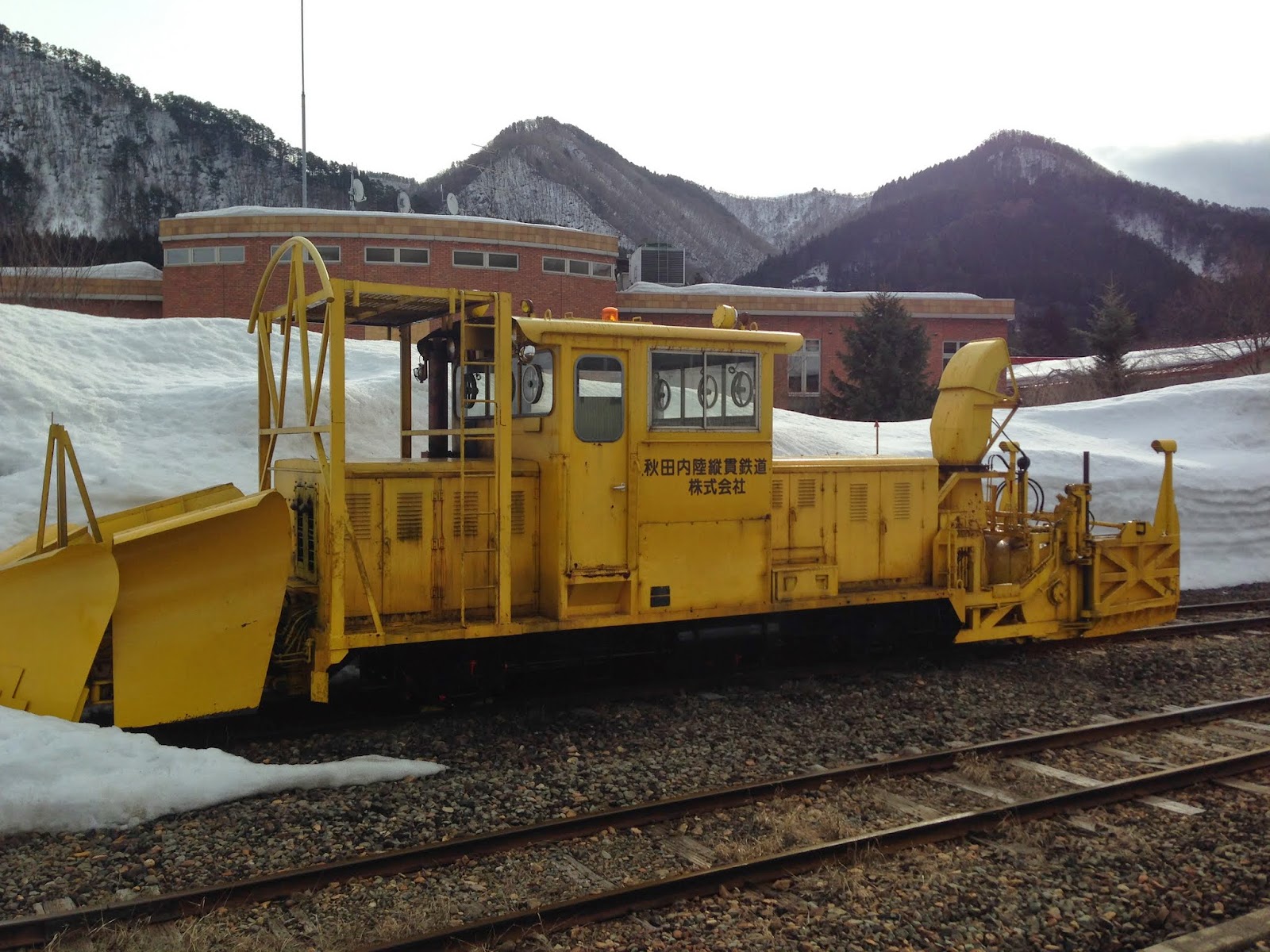For more detail on the situation in rural Akita, this article by John Mock makes a very sobering read. http://www.japanfocus.org/-John-Mock/4095
And yet, the Nairiku line is beautiful. I went up there many years ago in April, which is not the best time to see snow country in Japan - bleak and brown - and I didn't realise how much of the line is absolutely stunning.
 |
| Bento 1 (spinach, chrysanthemum leaves, daikon pickles and egg rolls) |
 |
| Ogata, Hiro's mother's hometown |
 |
| The Ani River |
 |
| The stations of the Nairiku Sen |
 |
| Snow near Ani Maeda |
 |
| Maeda Minami |
 |
| Maeda Minami |
 |
| Maeda Minami |
| Maeda Minami |
| Maeda Minami Station |
 |
| Towards Kobuchi |
 |
| GPS calls this Gomihori, towards Kobuchi |
 |
| Despite being in the deep mountains, there are few tunnels. The tunnels that are on this line are very short. Near Ani ai |
 |
| Ani Ai station |
 |
| Waiting for the train coming the opposite direction at Ani Station. It was a 6 minute stop here. |
 |
| Heavy duty snow clearing machinery for heavy duty snow. |
 |
| Ani Arase |

6 comments:
I first discovered your blog a few years ago when looking for information about the Akita Nairiku Line. I recall you being unimpressed, but I nonetheless caught it and indeed enjoyed the scenery and the experience. Inspired this. I feel a strong need to catch as many of these local lines as I can before they inevitably succumb to changing demographics. Your photos are stunning and I'd love to catch it in winter too. I highly recommend the Nagaragawa Railway to Gujo-Hachiman and Hokuno as another great example.
You are absolutely correct; it's a mea culpa from me. Loved your post on Gujo Hachiman, and the poem is very moving. The area up the isolation and decay is palpable. I'd really recommend a skim through the John Mock article.
It so forlornly melancholic at the same time being breathtaking beautiful.
I understand not wanting to live there... shovelling that kind of snow for 4 months of the year... and yet it's so sad to see.
I did have a read of Mock's article. Very interesting. Have you read any of Spike Japan? Such a pity he doesn't publish any more, but his tales of demographics and rusting Japan are well worth reading. His story on Kiyosato is a good one (missing from the site navigation, so I've highlighted it) along with Requiem for a Railway.
Thanks for the link. I have a vague recollection of seeing the Yubari post before, but I am not sure why I hadn't made a proper mental note of it. Sentimentalism over comes me reading them.
Sometimes I get the feeling in Akita that good education is not encouraged at an upper level. If people are educated and go to Tokyo, or even Sendai to study, they don't come back. The local govt. uses taxes to educate kids who will in many cases never themselves be taxpayers in the area. Some may come back to retire, and then again they become an economic drain rather than benefit.
Free market and freedom of moment doesn't look kindly upon rural Japan with a plummeting population.
Quite familiar with rural city reluctance to encourage further education. I think it's true of many regions of the world. It's a pity because there are many cities in Japan, of which Akita should be one, which could work well as university towns. A lot of regional Japan seems to have facilities and services that rural Australia would envy, especially if there were enough locals to support them. With such fine transport links Japan could be far more decentralised. Tokyo to Nagoya is shorter than my daily commute across Sydney. But of course such transport is expensive and as you have shown the slower route can be very slow.
Then again, are you sure it's not that really annoyingly noisy monument to Taro Shoji that is driving the young folk away from Akita?
I don't know the Taro Shoji monument!
Something new to check out.
Post a Comment